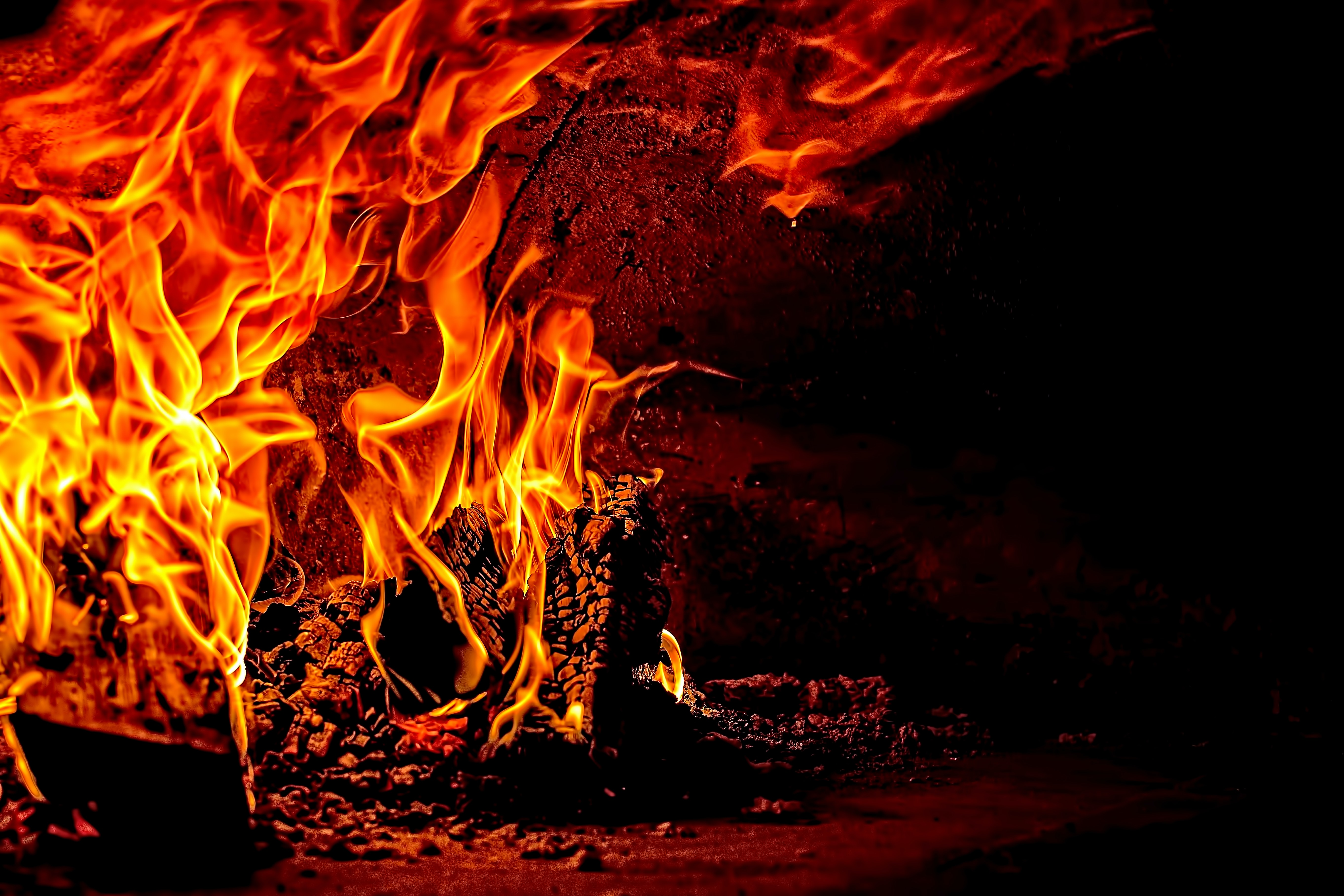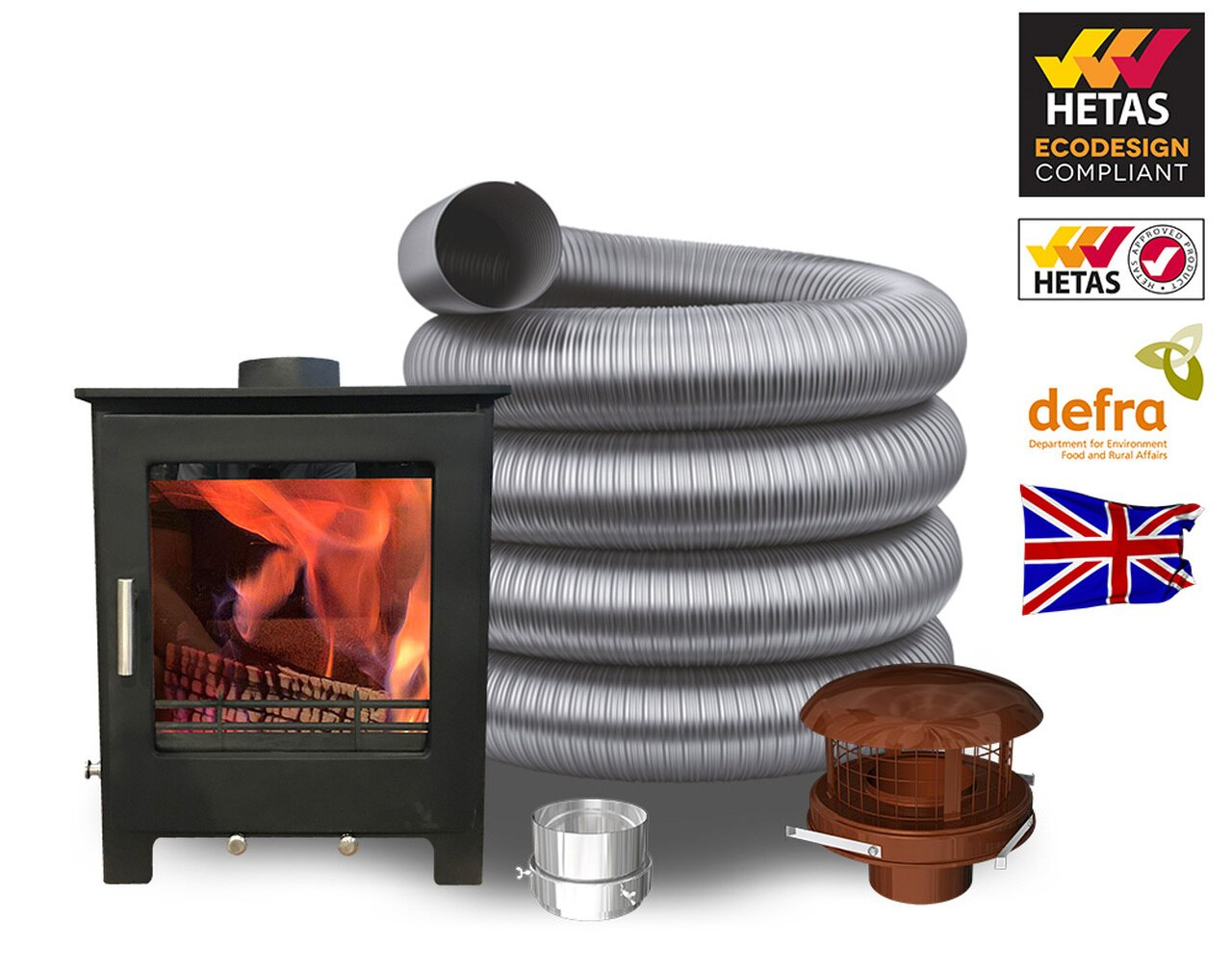A Guide to Ready to Burn Fuels
What are you allowed to burn on your stove or fireplace? In the past, you could burn near enough anything. However, a new set of regulations are being introduced by the UK Government which will specify exactly what types of fuel you can and can’t burn on your stove or fireplace. Read on to find out everything you need to know about Ready to Burn fuels.
What is the Ready to Burn legislation?
As of the 1st May 2021, the sale of traditional house coal and wet wood is to be banned. This is being done to improve air quality across the UK. These changes are based on a piece of legislation - The Air Quality (Domestic Solid Fuels Standards) (England) Regulations 2020.
The regulations are being made under section 87 of the Environment Act 1995 (c. 25).
The regulations are broken down into several parts which cover various fuel types such as wood, manufactured solid fuels and coal.
The regulation has been introduced as wet wood (defined as wood that has a moisture content of more than 20%) and traditional house coal produce smoke and harmful particulates when they are burnt.
With regards to coal, the sale of bituminous coal (whether pre-bagged or loose) is completely banned. However, an ‘Approved Coal Merchant’ can continue to sell coal directly to consumers during a two-year grace period which ends on the 30th April 2023.
At present, these new regulations only apply to England.
What does the Ready to Burn legislation mean for stove and fireplace owners?
To put it simply, if you’re buying wood to burn in your fireplace or stove, you need to make sure it carries the Ready to Burn mark. The Ready to Burn mark means that the wood has a moisture content of no more than 20%. (As a side note, this regulation only applies to the sale of wood in bundles of 2m³ or more).
The Ready to Burn mark is run by Woodsure Ltd, a not-for-profit, DEFRA appointed Certification Body. It’s the job of Woodsure to administer the Ready to Burn mark and to ensure that all wood sold after the 1st May 2021 complies with the Air Quality (Domestic Solid Fuels Standard) (England) Regulations 2020.
Commenting on the introduction of the legislation and the Ready to Burn mark, Woodsure Chairman, Bruce Allen, said:
“This new legislation is incredibly positive for all concerned. The banning of polluting wet wood and house coal in England will promote real change with dry wood and smokeless mineral fuels being the only ones left on the market, available for purchase and use.
“Crucially there will be a requirement for a Ready to Burn Certification scheme with its clear logo giving customers and sellers a clear indication of what fuel is actually ready to burn and therefore can be purchased legally. This, along with modern clean low emissions appliances will make a huge difference to the environmentally responsible use of solid fuels and wood for stoves and boilers.
“This is a significant step to reducing particulate emissions and better air quality. Businesses that are already Woodsure Ready to Burn are already supplying firewood that meets such requirements and are well placed to be ready for May.”

What is Ready to Burn wood?
Having read all of the above, you might be wondering what exactly it all means for you. Wood is wood right? Not according to the new Ready to Burn legislation.
Under this new legislation, wood that is certified as being Ready to Burn has a moisture content of less than 20%. This also means that it’s ready to use straight away.
The lower moisture content of Ready to Burn wood has many benefits:
> Ready to Burn logs and briquettes burn more efficiently than unseasoned, green ‘wet’ wood.
> Ready to Burn wood has less of an environmental impact than wet wood. So, by using it, you’ll be doing your bit to protect the environment.
> Ready to Burn wood is not only better for your appliance and your chimney, but will also reduce your maintenance and fuel costs.
Ready to Burn wood is available in several different forms such as bundles of firewood, briquettes, pellets, chips, and hog.
You can find suppliers of Woodsure certified Ready to Burn wood here.
How can I tell if wood is Ready to Burn certified?
The regulations apply to the sale of any wood under the volume of 2m³. If you buy wood over the volume of 2m³, it doesn’t have to be certified as Ready to Burn, but it should be supplied with advice on drying.
To check that the wood is Ready to Burn certified, there are a number of things you can do:
> Check that the wood carries the Ready to Burn stamp of approval (a small orange and red logo).
> Ask the supplier. Ready to Burn wood should have been dried for up to 2 years or kiln dried at a controlled temperature.
> Look for radial cracks and loose bark. This indicates that the wood has been sufficiently dried out.
> Use a wood moisture meter.
How to store Ready to Burn wood
Ready to Burn wood may have a much reduced moisture content compared to wet wood, but many of the same storage tips apply.
If you are storing your Ready to Burn wood outside, then you should protect it from direct rain, store it off the ground, allow air to circulate around it and do not closely cover the wood. If you’re intending to store your wood indoors, then don’t store it too close to your stove or fireplace.
What other types of Ready to Burn fuel are there?
The new law has also introduced changes to the sale of manufactured solid fuels.
Manufactured solid fuels are fuels made from coal, wood, plant-derived materials, waxes or petroleum products along with other ingredients that are suitable for burning in domestic settings.
The industry-body HETAS has been appointed by the government to run the Ready to Burn scheme for manufactured solid fuels.
Under the regulations, manufactured solid fuels have to meet certain standards:
> In respect of sulphur content, either -
> BS1016 - 106.5: 1996; or
> ISO 157:1996; and
> In respect of smoke emissions, BS3841.
To put it simply, manufactured solid fuels cannot have a sulphur content of 2% or more (on an ash-free dry basis), and they cannot emit smoke at a rate of five grams or more an hour.

Shop Now - Woodford Lowry 5x Wood Burning/Multi Fuel Stove - Basic Pack.
Is Ready to Burn wood better for your appliance and chimney?
Yes. Recent trials conducted by Leeds University found that between 10% and 20% moisture is best for an efficient burn. This means that Ready to Burn wood gives off fewer particulates, which will lead to less soot accumulating in your chimney. Ready to Burn wood is also less likely to blacken the glass on your stove.
Do I need to change my chimney flue for Ready to Burn fuels?
You won’t necessarily have to change your flue in order to use Ready to Burn fuels. However, now is a good time to have your chimney swept and inspected. If you find that your flue is old or could be in better condition then you will benefit from installing a new flue.
Here at Trade Price Flues, we have a huge range of different sized and different grade flues.
Shop chimney flues at Trade Price Flues now
Read more chimney and flue advice on the Trade Price Flues blog…
How do You Fit a Chimney Liner? | What Different Types of Chimneys Are There? | Chimney Liner Sizing Guide
Latest Articles
-
Air Pollution Down in the UK Despite Record Wood Burner Sales
Great news! Wood-burning stoves, once considered environmental villains, have transformed into eco-f …18th Apr 2024 -
A Guide to Stove Installation in Lodges, Sheds, and Shepherd’s Huts
Shepherd’s huts, lodges, and sheds have become increasingly popular as charming retreats or alternat …25th Mar 2024 -
Pinned vs. Pinless Moisture Meters: Which is Best for Firewood?
When you collect or buy firewood, it usually starts very moist inside. Using sopping wet wood to bur …4th Mar 2024






